
*
Like most of the artists and audience at the Dec. 31, 2012, New York Philharmonic concert celebrating the work of Marvin Hamlisch, I was in the midst of the day's activities when I learned of Marvin Hamlisch's death. When the initial shock wore off I realized that the interview I was looking forward to having with Marvin for this article was not going to happen. Instead, I would be prevailing upon his friends, protégés, and colleagues who were lucky enough to have known him longer and better than I so that I might write a very different article: a salute to one of America's greatest musicians.
Hamlisch, born in 1944 in Manhattan, attended the Professional Children's School, Juilliard, and Queens College, where he earned a bachelor of arts degree. In 1974 he hit an Academy Award trifecta, receiving three Oscars in one evening, for "The Sting" (Best Original Song Adaptation) and "The Way We Were" (Best Original Song and Best Original Dramatic Score). This achievement paved the way for his now legendary hit, A Chorus Line, which in turn earned him the Pulitzer Prize in 1976. At the time of his death last summer Marvin was about to add The Philadelphia Orchestra to the list of ensembles over which he presided as official pops conductor, and his musical theatre version of "The Nutty Professor," a collaboration with Jerry Lewis and the lyricist Rupert Holmes, was gaining momentum in out-of-town previews.
Hamlisch left a legacy that includes scores for more than 40 motion pictures, a string of Broadway shows, and the symphonic work, "Anatomy of Peace."
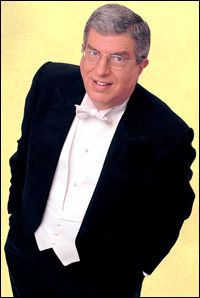 |
||
| Marvin Hamlisch |
Whenever I interviewed Marvin, he took great joy praising each singer on the program, providing biographical details of every one of them. That warmth of feeling has always been returned. Star mezzo-soprano Frederica von Stade ranks him among the great American conductors and composers with whom she has collaborated over 30-odd years in the opera and concert houses of the world. "What distinguishes Marvin's songs," she says, "are his drop-dead gorgeous melodies that are so very vocal. He is a great part of the American songbook — the true modern day link to the tradition of Kern, Porter, and Gershwin."
Hamlisch himself took pride in those tunes, answering the question as to how he'd liked to be remembered in music history books by saying, "I always try to ground my listener in a good melody. Nowadays it's considered old-fashioned, but for me it remains the most important thing."
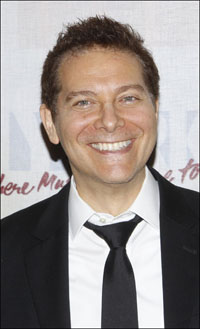 |
||
| Michael Feinstein |
||
| Photo by Joseph Marzullo/WENN |
"That richness of sound," continues Irene Breslaw, the New York Philharmonic's Assistant Principal Viola, "is emblematic of a generation. You could see that in the people who came to his Philharmonic concerts. It wasn't the soloists — he was the attraction. When I played for Leonard Bernstein I always felt I was blessed by the presence of genius. While Marvin modestly shows a reverence for the Philharmonic, in his own genre he gave me that same feeling."
Here's what some of music and theatre's biggest stars had to say about Marvin Hamlisch:
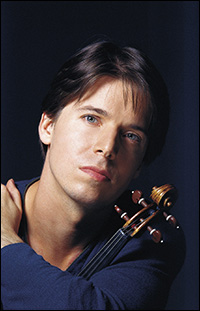 |
||
| Joshua Bell |
Violinist Joshua Bell, who worked with Hamlisch on his album "At Home with Friends": "I didn't want it to be the usual crossover album of pop and classical but rather interesting and unexpected combinations of highly respected musicians doing unusual things together. I found out that Marvin had done this arrangement for violin and piano of 'I'll Take Manhattan' originally for himself and [Philharmonic Concertmaster] Glenn Dicterow. When asked, Marvin got right back to me and said, 'sure, let's do it.' He was very open to my suggestions about how to adjust it, very experimental and pleasant about rehearsing, and the way he approached the instrument and his understanding of harmony were quite amazing."
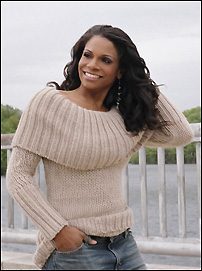 |
||
| Audra McDonald |
||
| Photo by Michael Wilson |
Soprano, actress, and five-time Tony Award-winning musical theatre diva Audra McDonald: "He felt that all music is worthy of being explored and interpreted in the most truthful and glorious way possible; a less cynical man I have never met. In terms of his own shows, take A Chorus Line: it is groundbreaking because it encompasses so many different styles — classical, 1970s rock — and his Juilliard training enabled him to do this. With him, it was all appreciation and discovery."
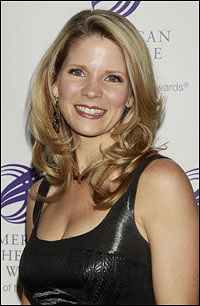 |
||
| Kelli O'Hara |
||
| Photo by Joseph Marzullo/WENN |
Broadway leading lady Kelli O'Hara, who created the role of Susan in the Hamlisch musical Sweet Smell of Success: "It was huge for me to be in a room working with a Pulitzer Prize–winning composer on a new piece that 100 years from now, because of its iconic nature, will still be identifiable as Hamlisch. The piece was so beautiful, dark and operatic, but it was not embraced the way it should have been because it followed on the heels of 9/11. Still, Marvin's concern was only for me, for my feelings, my comfort. When they cut one of my songs he said, 'You know, they used to cut songs for Ethel Merman, too.' When we worked at the keyboard he would do whatever was more comfortable for me. That this genius was so beautiful to me will remain one of the highlights of my life."
 |
||
| Maria Friedman |
Singer-actress-director Maria Friedman, well known in her native England but not in the U.S. when Hamlisch heard her singing on the radio: "Marvin later told me he stopped the car, pulled over and said, 'I've got to work with that woman!' He flew me over, got me a visa, and booked me in the United States and London whenever he could. When I told him I was very sick with cancer, with no hair whatsoever, he said, 'Can you sing?' That was all he cared about. Three weeks later I broke my leg and I had to tell him I'd also be wearing a weight-bearing surgical boot, Marvin said, 'For God's sake, pull yourself together!,' but he didn't cancel the concert or replace me. He just said, 'With your bald head and your broken leg you're gonna make me look a lot better.' His faith in me helped me get well."
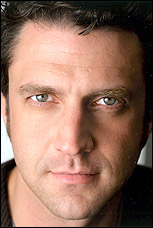 |
||
| Raúl Esparza |
Theatre, film, and television star Raúl Esparza: "When Marvin believes in you he insists until you start to believe. He thought I would make a phenomenal Billy Bigelow [in Carousel ] for the New York Philharmonic's 2008 Broadway's Greatest Showstoppers. The outsized, direct Rodgers & Hammerstein work requires absolute commitment to its heart-on-sleeve simplicity, with big voice singing against a big orchestra. My voice is big, but it's a rock voice — I would never have chosen that for myself — but when that soliloquy was over, I heard the audience screaming and I saw Marvin beaming with pride and joy." A version of this piece appeared in the December 2012 Playbill of the New York Philharmonic at Avery Fisher Hall at Lincoln Center. Robin Tabachnik is a New York-based arts and culture journalist who writes frequently for Playbill, Town & Country and IN New York magazine.










